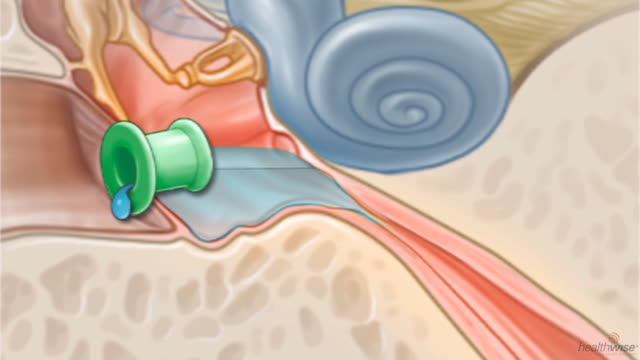Tubes for Ear Infections
Surgery Overview
Ear tubes are plastic and shaped like a hollow spool. Doctors suggest tubes for children who have repeat ear infections or when fluid stays behind the eardrum. A specialist (otolaryngologist) places the tubes through a small surgical opening made in the eardrum (myringotomy or tympanostomy). The child is unconscious under general anesthesia for this surgery.
Tubes can help with ear infections because they:
- Allow air to enter the middle ear.
- Allow fluid to flow out of the middle ear through the tube into the ear canal.
- Clear the fluid from the middle ear and restore hearing.
- Prevent future buildup of fluid in the middle ear while they are in place.
- Decrease the feeling of pressure in the ears, which reduces pain.
What To Expect
Tubes can be inserted in an outpatient surgery clinic. Children usually recover quickly and have little pain or other symptoms after surgery. Children can usually go home within 1 to 2 hours after the surgery. Your child will probably be able to return to school or child care the next day.
Follow-up visits to the doctor after a child has tubes inserted are very important. The doctor checks to see whether the tubes are working and whether the child’s hearing has improved.
Ask your doctor if your child needs to take extra care to keep water from getting in the ears when bathing or swimming. Your child may need to wear earplugs. Check with your doctor to find out what he or she recommends.
Tubes normally remain in the ears for 6 to 12 months. They often fall out on their own. If the tubes don’t fall out on their own, your child may need surgery to remove them. After the tubes are out, watch your child for signs of ear infection or fluid behind the eardrum.
Why It Is Done
Placing tubes in the ears drains the fluid and ventilates the middle ear. Tubes may keep ear infections from recurring while the tubes are in place. They also keep fluid from building up behind the eardrum. Doctors consider surgery to insert tubes:
- If a child has had fluid behind the eardrum in both ears for more than 3 months and has significant hearing loss in both ears.
- If a child has repeat ear infections.
How Well It Works
Ear tubes often restore hearing. While the tubes are in place, they often prevent buildup of pressure and fluid in the middle ear. And they can reduce pain.
Tubes may keep ear infections from recurring while the tubes are in place. But infections may return after the tubes are gone.
Risks
Minor complications occur in up to half of the children who have tubes inserted. Usual complications include:
- A thickening of the eardrum over time. These changes in the eardrum may affect hearing in a very small number of children.
- Discharge of pus (otorrhea) from the ear. This is common and can become an ongoing problem in some children.
Other possible complications:
- The tube may become blocked, allowing ear fluid and infections to return.
- The tube may slip out of place, possibly falling into the middle ear (rare).
- Tissue may form behind the eardrum (cholesteatoma). This is also rare.
What To Think About
Some children who have tubes inserted may need to have tubes reinserted.
Tubes may scar the eardrum. Scarring may lead to minor hearing loss.
After surgery, a child needs regular checkups to see that the tubes are working. In some cases, the child may need antibiotics to prevent or treat infections.
References
Other Works Consulted
- Rosenfeld RM, et al. (2013). Clinical practice guideline: Tympanostomy tubes in children. Otolaryngology—Head and Neck Surgery, 149(Suppl 1): S1–S35. DOI: 10.1177/0194599813487302. Accessed January 17, 2014.
Credits
Current as of: October 21, 2018
Author: Healthwise Staff
Medical Review:Susan C. Kim, MD – Pediatrics & Kathleen Romito, MD – Family Medicine & John Pope, MD, MPH – Pediatrics
Current as of: October 21, 2018
Author: Healthwise Staff
Medical Review:Susan C. Kim, MD – Pediatrics & Kathleen Romito, MD – Family Medicine & John Pope, MD, MPH – Pediatrics
This information does not replace the advice of a doctor. Healthwise, Incorporated, disclaims any warranty or liability for your use of this information. Your use of this information means that you agree to the Terms of Use. Learn how we develop our content.





